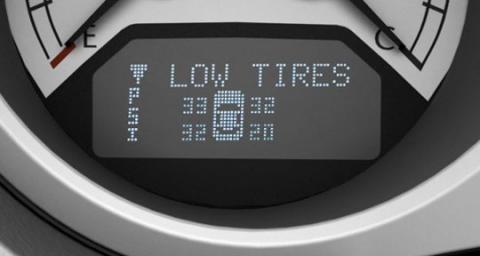
The Tire Pressure Monitoring system was mandated by law after 1997, and it checks the air pressure of each tire on your vehicle to assure the driver of proper inflation. If the tire pressure is low, it will trigger a low reading on the dash, and may also trigger a warning light to alert the driver of an unsafe condition.
When the Service tire warning light is illuminated it typically indicates that there is a communication problem with the TPM sensors. However, it could also indicate a low tire pressure reading; especially when it’s extremely hot or cold. In most cases, the first thing you should do is physically check the tire pressure on all four tires to ensure they are set as recommended by your manufacturer. If the tire pressure is good on all tires, the TPMS will need to be checked to see if the sensor is damaged and needs to be replaced. This is something you should do sooner than later, as it’s a very important safety sensor that can save you a lot of money on a flat tire, damaged rims or avoid an accident.
At the first sign of continuous problems with readings, bring your car in for inspection. Low tire pressure creates a number of problems with controlling your vehicle, as it effects handling, braking distance, load capacity and more. Whatever the reason for your low pressure, we’ll find it and get you back on the road quickly and safely.

 Sign-up today for service interval reminders such as: oil & filter, brakes, tires, and more... These parts are designed to wear & need to be replaced before any major damage occurs. We can help.
Sign-up today for service interval reminders such as: oil & filter, brakes, tires, and more... These parts are designed to wear & need to be replaced before any major damage occurs. We can help.